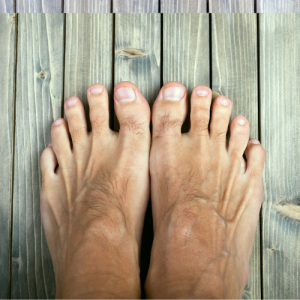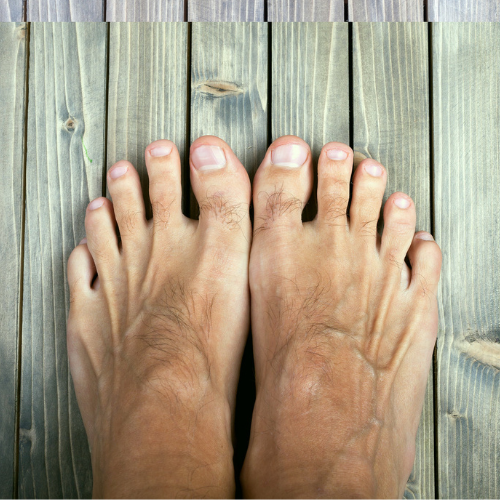 Many of us may be familiar with bunions, a bump that often forms along the big toe, but did you know you can get a bunion on other toes? Another area a bunion can develop is on the pinkie or little toe! If you develop a bunion on your little toe, it is known as a tailor’s bunion and like a bunion can become a great source of pain.
Many of us may be familiar with bunions, a bump that often forms along the big toe, but did you know you can get a bunion on other toes? Another area a bunion can develop is on the pinkie or little toe! If you develop a bunion on your little toe, it is known as a tailor’s bunion and like a bunion can become a great source of pain.
What is a Tailor’s Bunion?
A tailor’s bunion, also known as a bunionette, is a bump that forms along the side of the 5th metatarsal bone, the bone at the bottom of your little toe. Though not as common as bunions, which occur on the inside of the foot along the big toe, tailor bunions are similar in causes and symptoms.
The unique name is developed from how tailors would sit, cross-legged with the outer sides of their feet pressed against the ground. As the tailor’s toe rubbed against the floor, a bunion would develop.
Causes
The most common cause of a tailor’s bunion is direct pressure to the metatarsal bone. This pressure can stem from improper footwear that is too narrow or tight or may be due to an abnormal shape or position of the metatarsal bone. In some cases, patients can inherit bone structure within their feet that makes them prone to developing a tailor’s bunion. Other causes may include loose ligaments within the foot, tight calf muscles, or feet that lean outward.
Signs & Symptoms
Tailor’s bunions progress gradually and generally start with a small bump over the side of the 5th metatarsal bone or near the base of your pinkie toe. If left untreated, this bump will increase in size over time due to inflammation and cause great pain.
Chronic rubbing of the bump against the inside of your shoe may cause the skin to become irritated and red, in some cases a bursa, or small fluid-filled sac may also form and develop into bursitis due to constant pressure and inflammation. The area of the skin may also harden and form a callus.
Treatment Options
Your podiatrist can diagnose your tailor’s bunion just by examining your foot, but x-ray imaging can help to determine the cause and help to decide the best treatment options.
Treatment for a tailor’s bunion begins with non-surgical options such as using over-the-counter medication to help reduce inflammation and pain while icing and elevating your feet when necessary. Orthotic pads can be used to minimize irritation and cushion the bunion. We may recommend shoe modifications or suggest wearing shoes with a wide toe box to avoid placing pressure on the bunion.
If pain persists, injection therapy may be used to help manage more painful symptoms and reduce swelling. Nonsurgical treatment options will not remove the bump but can significantly reduce and even eliminate the painful symptoms.
If your condition is severe and does not respond well to conservative treatment options, surgery may be considered. Surgical procedures designed to treat a tailor’s bunion include shaving the bump down or repositioning the fifth metatarsal bone into an ideal position and securing it with screws or plates.
The length of your recovery will vary depending on the procedure performed. Generally, patients can expect a few months of keeping weight off the foot and using a walker, crutch, or boot to help protect the foot as it heals. Physical therapy may also be needed to help strengthen your foot muscles.
Our feet and toes play essential roles in helping us navigate and explore the world. Our expert staff is here to help ensure your feet stay healthy so that you can continue to live your best life. For more information on tailor’s bunions or to schedule an appointment, contact Foot and Ankle Centers today.







